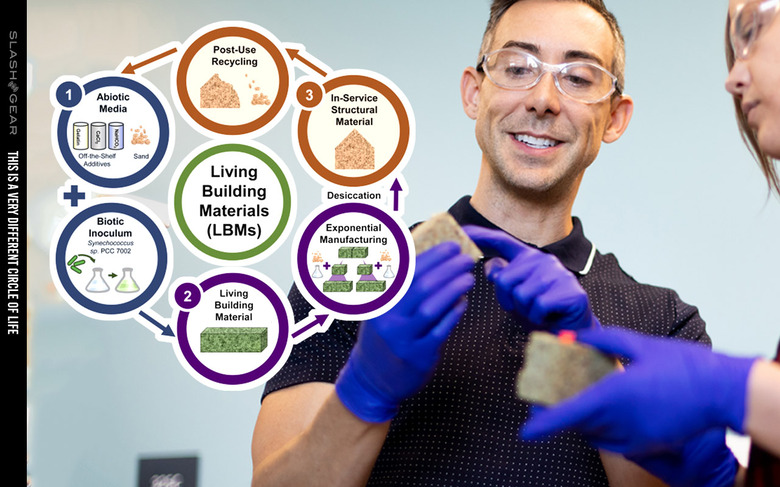DARPA-backed living bricks could reproduce, self-heal, and slurp CO2
Researchers have discovered a method with which they're able to create living bricks that turn carbon dioxide into CaCO3, the main ingredient for cement. Studies with Synechococcus cyanobacteria (we'll just refer to it as bacteria from here on out) showed great potential for future building projects when used in combination with sand, carbon dioxide, and a specific range of humidity conditions. Cutting the resulting bricks results in self-healing and reproduction.
The process begins with inoculation of colonies of bacteria into a solution of sand and gelatin. The process used in the research takes in carbon dioxide and creates calcium carbonate, mineralizing the gelatin which, in turn, binds the sand. "We use bacteria to help grow the bulk of the material needed for construction," said assistant professor Wil Srubar of the Department of Civil, Environmental and Architectural Engineering (CEAE) at University of Colorado Boulder.

It's like they've used water to create a sand castle – but the resulting material here won't crumble so easily. These bricks are as rough and tough as most modern mortar used in buildings by construction workers in our cities every day.
These bricks can also reproduce – brick material making brick material, the (sorta) natural way. It's like growing trees just to use their wood as building materials – but here the materials wouldn't just be tree corpses, they'd be alive – and helpful!

"We know bacteria grow at an exponential rate, so rather than manufacturing bricks one-by-one, you may be able to make one brick and have it split into two, then four, and so on," said Srubar. "That would revolutionize not only what we think of a structural material, but also how we fabricate structural materials at an exponential scale."
For more information on this study and these living bricks, take a peek at the paper Biomineralization and Successive Regeneration of Engineered Living Building Materials as published in the research journal Matter (at Cell dot com). This research was authored by Chelsea M. Heveran, Sarah L. Williams, Jishen Qiu, Juliana Artier, Mija H. Hubler, Sherri M. Cook, Jeffrey C. Cameron, and Wil V. Srubar III. You can find this paper with code DOI:10.1016/j.matt.2019.11.016 as of January 15, 2020. ALSO: Below you'll see a presentation video on living materials from Srubar.
A note included with the paper: "The work depicted is sponsored by the Defense Advanced Research Projects Agency (Agreement HR0011-17-2-0039 )" – that's DARPA. They're all about wild new materials right about now. Authors also noted: "The content does not necessarily reflect the position or the policy of the Government, and no official endorsement should be inferred."
